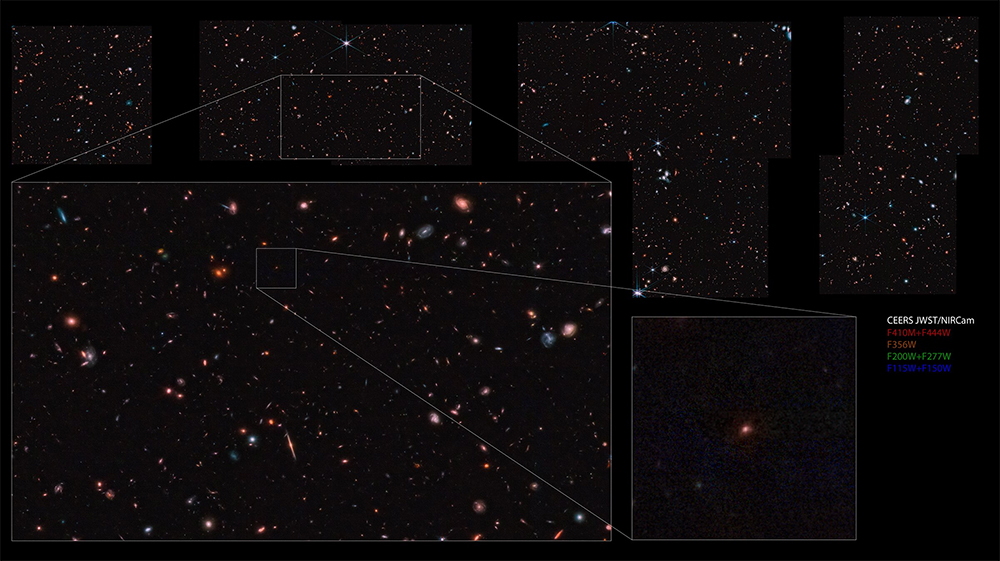Wide View of Early Universe Hints at Galaxy Among the Earliest Ever Detected
Versão portuguesa disponível aqui
Two new images from NASA’s James Webb Space Telescope show what may be among the earliest galaxies ever observed. Both images include objects from more than 13 billion years ago, and one offers a much wider field of view than Webb’s First Deep Field image, which was released amid great fanfare July 12. The images represent some of the first out of a major collaboration of astronomers and other academic researchers teaming with NASA and global partners to uncover new insights about the universe.

The team has identified one particularly exciting object—dubbed Maisie’s galaxy in honor of project head Steven Finkelstein’s daughter—that they estimate is being observed as it was just 290 million years after the Big Bang (astronomers refer to this as a redshift of z=14).
The finding has been published on the preprint server arXiv and is awaiting publication in a peer-reviewed journal. If the finding is confirmed, it would be one of the earliest galaxies ever observed, and its presence would indicate that galaxies started forming much earlier than many astronomers previously thought. […] Read more in the original article: UTNews.


Leave a Reply